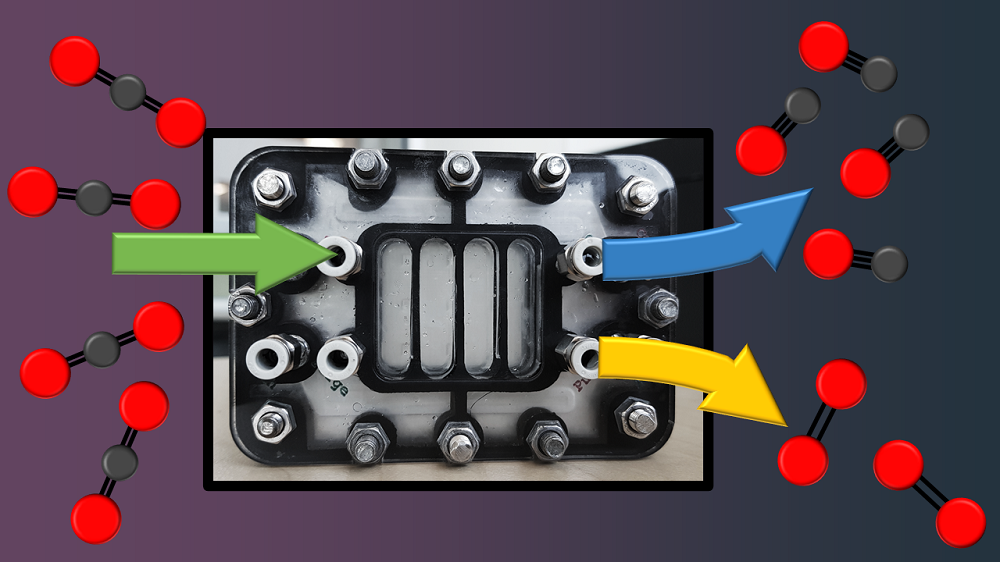Large-scale implementation requires electrolysers to operate with low overpotentials, high current densities and high FE, in order to facilitate high energy efficiency, conversion rate and selectivity [
10]. One of the as-yet unsolved challenges, which hinders the mass adoption, is the productivity loss, due to decreased current density and FE, observed with scale-up [
11]. Only a handful of examples of pilot systems have been reported to date. In each of these examples CO
2 is electrochemically converted into CO, on silver coated gas diffusion electrodes (GDEs) [
8,
12]. Silver (Ag) based electrocatalysts have been recognised as being promising for CO production, with excellent selectivity, activity and moderate cost [
8]. The effectiveness of Ag as a catalyst is due to its relatively strong adsorption capability for key intermediates and low CO binding energy. To promote high selectivity towards CO
2 reduction while supressing hydrogen evolution, a key competing reaction at the cathode-electrolyte interface, conditions such as solution pH, electrolyte composition, temperature, pressure, applied potential and concentration of CO
2, as well as the chemical and morphological nature of the catalyst, play a significant role and have to be considered [
13,
14]. GDEs offer a less restricted mass transport of CO
2 to the catalyst [
15,
16], as it is delivered directly to the back of the porous electrode, making it a more effective approach than solution-side delivery, where the solubility of CO
2 is relatively low [
17], as this typically limits the attainable current density.







